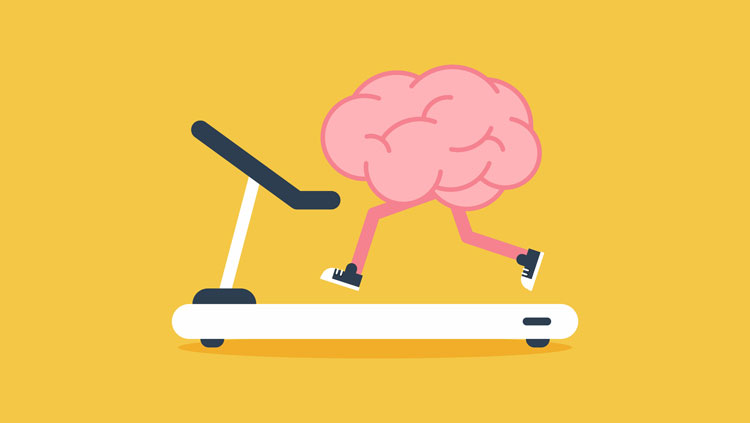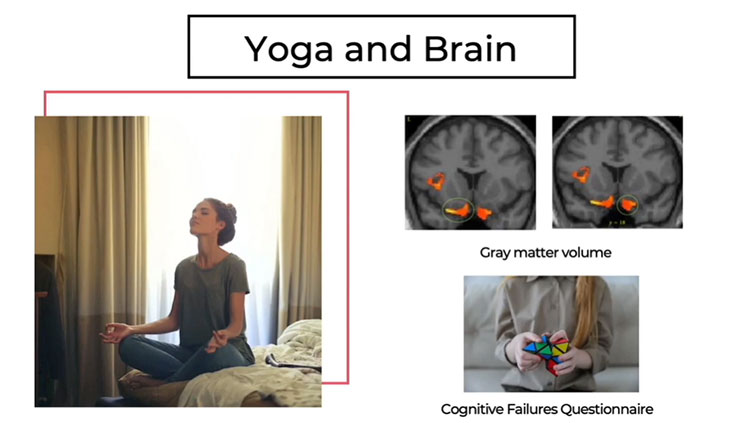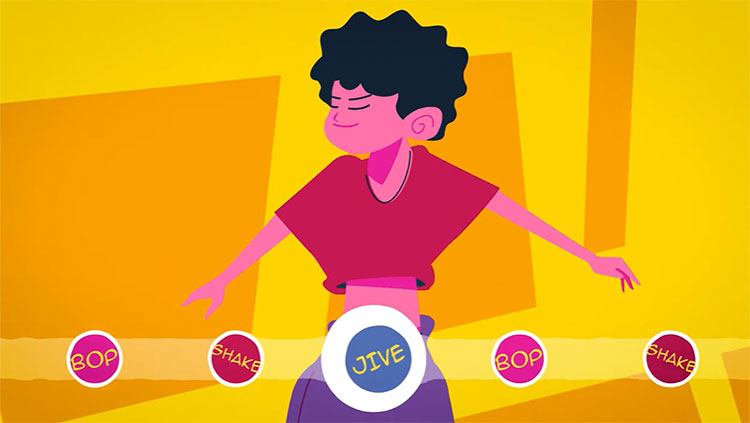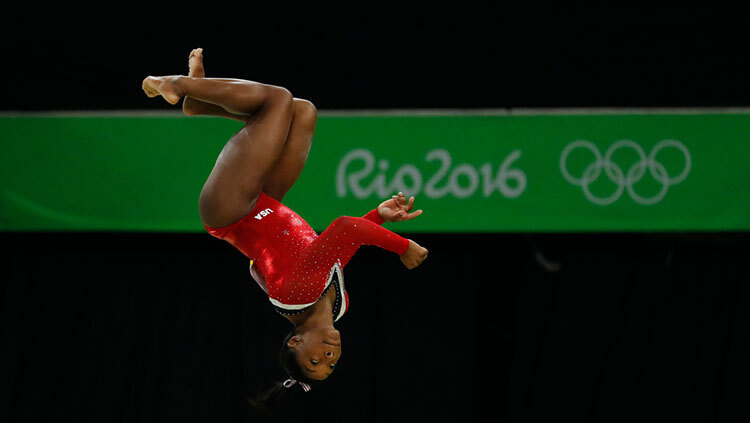Keeping the Brain Young with High Intensity Exercise
- Published7 Nov 2023
- Author Mollie McGurk
- Source BrainFacts/SfN

It is well-established that physical exercise plays an important role in brain health throughout life. But could taking your workouts up a notch even prevent Alzheimer’s or Parkinson’s?
Exercise in general has been shown to have various benefits for brains of all ages, from improving mood to memory. Emerging evidence demonstrates moderate- to high-intensity workouts may be better at keeping us sharp as we grow older. Increasing exercise intensity could have an even more profound impact on the mechanisms important to forging new connections and repairing damage in the brain. Researching how the brain responds to intense exercise could open new avenues in the treatment of devastating neurodegenerative diseases.
Working the Heart to Sharpen the Mind
Heart rate is a measure used to define exercise intensity levels. Moderate intensity requires 50%–70% of your maximum heart rate, like brisk walking or bicycling at 10–12 mph. High intensity requires 70%–85% of your maximum heart rate, like jogging or fast bicycling at 14–16 mph.
Moderate- to high-intensity exercise that elevates your heart rate provides a multitude of benefits for the aging brain. For one, the brain releases mood-boosting neurotransmitters during exercise that support mental health. “Managing anxiety and depression is very important for cognition and brain health downstream,” says neuropsychologist Julie Brody Magid, director of the McLean Hospital’s Memory Disorders Assessment Clinic. “I see patients in the memory clinic with cognitive changes due to depression, including reduced processing speed, working memory, and efficiency of learning and retrieval of information.” Magnetic resonance imaging (MRI) scans show depressed patients have reduced brain volume, notably in the hippocampus, which is responsible for learning and memory.
Intense exercise also strengthens the cardiovascular system, improving circulation. This is key to understanding how it is so good for the brain. “Physical activity increases brain blood flow, something that is quite challenging to do otherwise. Brain blood flow is extremely well-controlled,” says Travis Gibbons, who researches how the brain responds to environmental and energetic challenges. Brody Magid agrees and says this is why intensity matters. “Rigorous exercise pushes more blood to the brain. This exposes it to nutrients, promotes cell growth, and prevents cell damage,” she explains.
How Intensity Level Makes the Difference
Intense exercise doesn’t just deliver more nourishment to the brain — it also sends a signal kicking off the brain’s own repair and rebuild system.
Muscles secrete the hormone irisin into the blood at higher levels during intense exercise. It’s a powerful tool to protect brain cells. “Irisin has been linked with neuroprotection and the growth of neurons,” explains biostatistician Kristen McGreevy, who is studying the influence of behaviors like diet and exercise on aging. “This could lead to enhanced cognitive functions such as memory and learning.” A September 8 study published in Neuron suggests irisin may be able to reduce the brain plaque found in Alzheimer’s disease. When irisin binds to brain cell receptors, the cells released an enzyme that dissolves buildup of amyloid beta, the plaque-causing protein associated with Alzheimer’s.
Exercise also triggers the release of ketones. These compounds are produced by the liver when the body begins to burn fat for fuel after carbohydrates (glucose) run out. The ketone body beta-hydroxybutyrate (BHB) has improved brain function in vascular dementia patients by protecting the blood-brain barrier and reducing neuroinflammation. “BHB seems to reduce oxidative stress, inflammation, and apoptosis [cell death]. These contribute to neurodegeneration,” says McGreevy.
Most importantly, the ketone BHB, the hormone irisin, and a key metabolite called lactate, which has been shown to boost cognitive performance after HIIT, may be among the messengers that tell the brain to produce a critical protein called brain-derived neurotrophic factor (BDNF). BDNF is referred to as “brain fertilizer” because it encourages the growth of new neurons and connections. It was the focal point of recent research by Gibbons. “BDNF promotes an environment for growth, neuroplasticity, and resilience,” he explains. In his study, just six minutes of high-intensity cycling increased levels of BDNF four to five times more than low-intensity cycling. “When we completed high-intensity exercise, BDNF increased above and beyond what could be expected.” Currently, BDNF, BHB, and lactate are among candidates being investigated as potential treatments for mental health conditions like depression, which can lead to cognitive performance issues like memory loss.
Building Brain Resilience
While there is consensus that moderate- to high-intensity exercise is most beneficial for the aging brain, more research is needed to find out which precise level of intensity is best. The SPARX3 trial is one such clinical study underway aiming to answer this question for people with Parkinson’s disease.
Gibbons notes that while exercise intensity is important, it is only one part of the picture. “I think physical activity can be extremely engaging beyond just moving the muscles. Running outside, surfing in the water, rock climbing — fun things are much more than just exercise. Environmental enrichment [like new experiences] improves neuroplasticity and BDNF levels in rodent models,” he explains. “Plus, you need exercise to be fun in order to be sustainable.” Sustainability and consistency are key when it comes to exercise, and making it fun rather than a chore means it will be easier to make exercise part of your lifestyle.
As new research expands our understanding of how to keep our brains healthy, exercise is likely to remain the most tried-and-true form of preventive medicine. “Exercise is key to putting you in a more resilient place,” concludes Brody Magid. “If you exercise regularly, you contribute to your brain’s reserve capacity. As a result, you may have delayed onset of symptoms if you do develop Alzheimer’s pathology and/or you may be less functionally limited."
CONTENT PROVIDED BY
BrainFacts/SfN
References
Costa, G. A., de Gusmão Taveiros Silva, N. K., Marianno, P., Chivers, P., Bailey, A., & Camarini, R. (2023). Environmental Enrichment Increased Bdnf Transcripts in the Prefrontal Cortex: Implications for an Epigenetically Controlled Mechanism. Neuroscience, 526, 277–289. https://doi.org/10.1016/j.neuroscience.2023.07.001
Gibbons, T. D., Cotter, J. D., Ainslie, P. N., Abraham, W. C., Mockett, B. G., Campbell, H. A., Jones, E. M. W., Jenkins, E. J., & Thomas, K. N. (2023). Fasting for 20 h does not affect exercise-induced increases in circulating BDNF in humans. The Journal of Physiology, 601(11), 2121–2137. https://doi.org/10.1113/JP283582
Hu, E., Du, H., Zhu, X., Wang, L., Shang, S., Wu, X., Lu, H., & Lu, X. (2018). Beta-hydroxybutyrate Promotes the Expression of BDNF in Hippocampal Neurons under Adequate Glucose Supply. Neuroscience, 386, 315–325. https://doi.org/10.1016/j.neuroscience.2018.06.036
Kim, E., Kim, H., Jedrychowski, M. P., Bakiasi, G., Park, J., Kruskop, J., Choi, Y., Kwak, S. S., Quinti, L., Kim, D. Y., Wrann, C. D., Spiegelman, B. M., Tanzi, R. E., & Choi, S. H. (2023). Irisin reduces amyloid-β by inducing the release of neprilysin from astrocytes following downregulation of ERK-STAT3 signaling. Neuron, S0896-6273(23)00623-2. Advance online publication. https://doi.org/10.1016/j.neuron.2023.08.012
Mandolesi L, Polverino A, Montuori S, Foti F, Ferraioli G, Sorrentino P, Sorrentino G. Effects of Physical Exercise on Cognitive Functioning and Wellbeing: Biological and Psychological Benefits. Front Psychol. 2018 Apr 27;9:509. doi: 10.3389/fpsyg.2018.00509. PMID: 29755380; PMCID: PMC5934999.
Tsuchiya, Y., Ando, D., Goto, K., Kiuchi, M., Yamakita, M., & Koyama, K. (2014). High-intensity exercise causes greater irisin response compared with low-intensity exercise under similar energy consumption. The Tohoku Journal of Experimental Medicine, 233(2), 135–140. https://doi.org/10.1620/tjem.233.135
Zhang Y, Zhang X, Lin S. Irisin: A bridge between exercise and neurological diseases. Heliyon. 2022 Dec 15;8(12):e12352. doi: 10.1016/j.heliyon.2022.e12352. PMID: 36619416; PMCID: PMC9816981
Zhitian Wang, Tian Li, Miaoyu Du, Lei Zhang, Linling Xu, Hao Song, Junjian Zhang, β-hydroxybutyrate improves cognitive impairment caused by chronic cerebral hypoperfusion via amelioration of neuroinflammation and blood-brain barrier damage, Brain Research Bulletin, Volume 193, 2023, Pages 117-130, ISSN 0361-9230, https://doi.org/10.1016/j.brainresbull.2022.12.011.
What to Read Next
Also In Movement
Trending
Popular articles on BrainFacts.org



















